How to grow Midori Giant soybean
The Midori Giant soybean is thriving in my kitchen garden. I'm so happy!
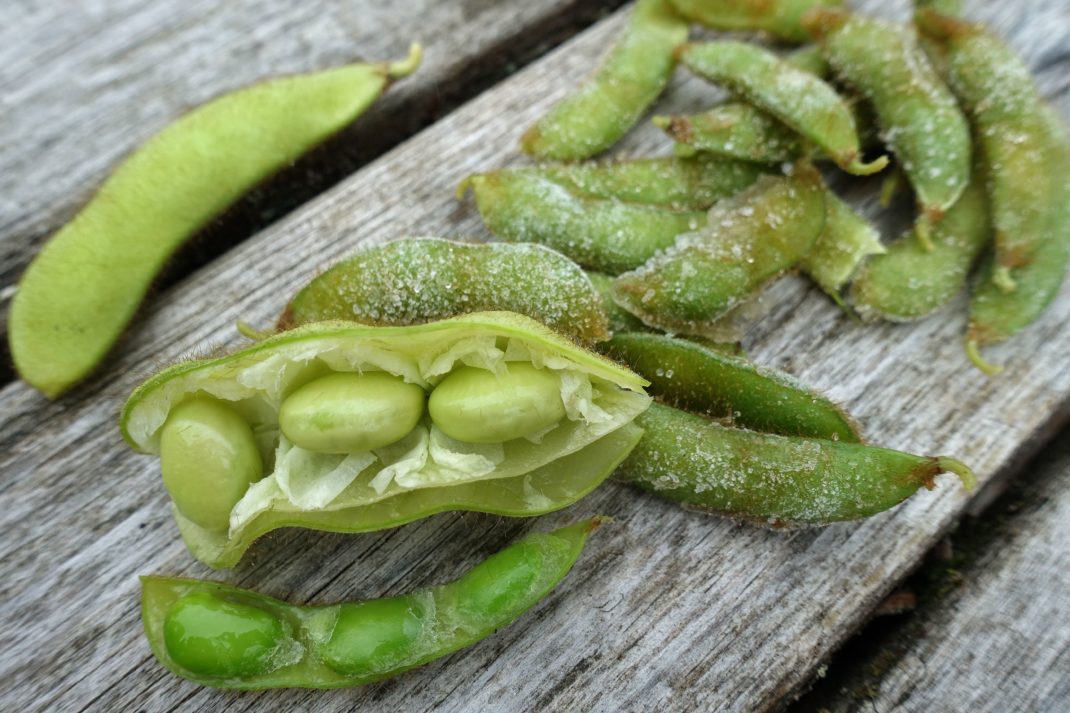
The large bright green soybean is the Midori Giant, the smaller one underneath is called Fiskeby. The beans with ice crystals come straight from the freezer.
It took me a while to get interested in soybeans, I only started growing them a few years ago actually. Since I'm not a vegetarian, I haven't ever thought about replacing meat with soy products. Those products honestly seem a bit unnecessary to me. They are produced somewhere far away and shipped all the way up here. I would rather eat locally grown beans instead.
I was, of course, intrigued to try growing something new though, especially when a new Swedish variety called Fiskeby caught my interest. It turned out to be a perfect fit for me and my garden. My family just loved the beans too, so I decided to grow plenty of them.
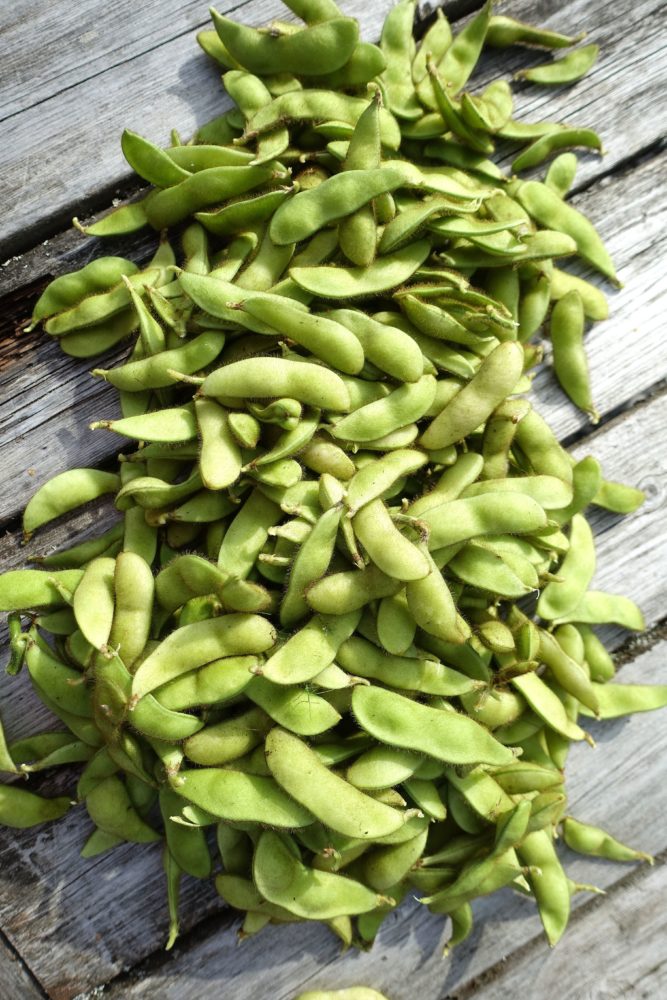
It's actually quite easy to grow plenty of soybeans. After all, the most important thing is to give them a nice and warm spot to grow.
Large and early bean
There are a few different varieties you can try in zone 3 of course, but Fiskeby seems to be the most common one. Probably because it's a fast-growing and early bean that develops quickly. The beans are quite small though.
That's why I felt curious when I heard about a soybean variety called Midori Giant. It's described as an early variety that produces a lot of beans. In my opinion, it's one of the best edamame varieties. Who could resist?
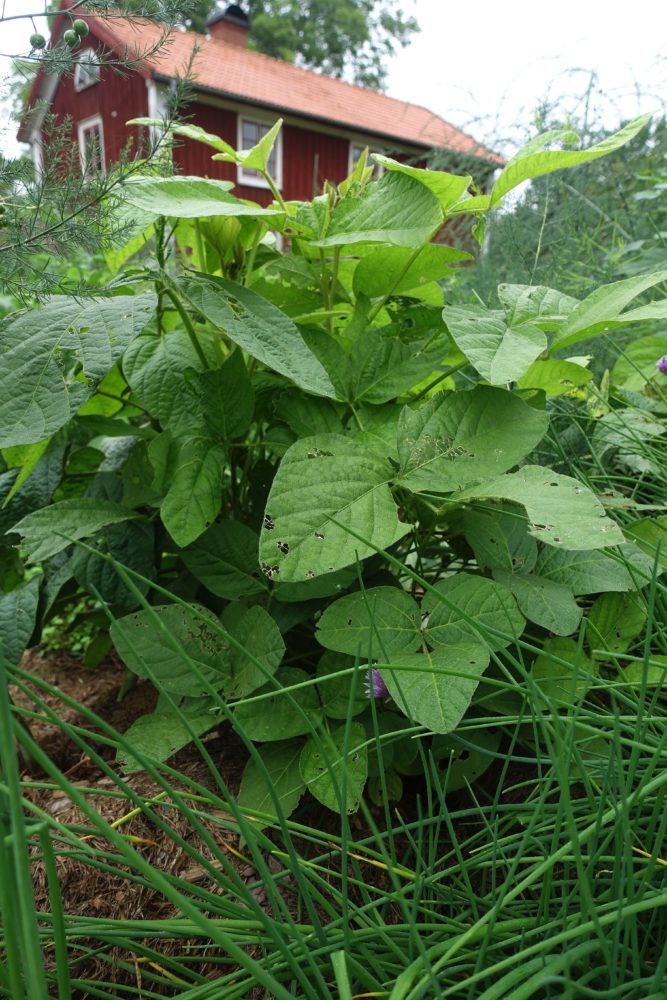
This is what Midori Giant looks like, here accompanied by chive and asparagus.
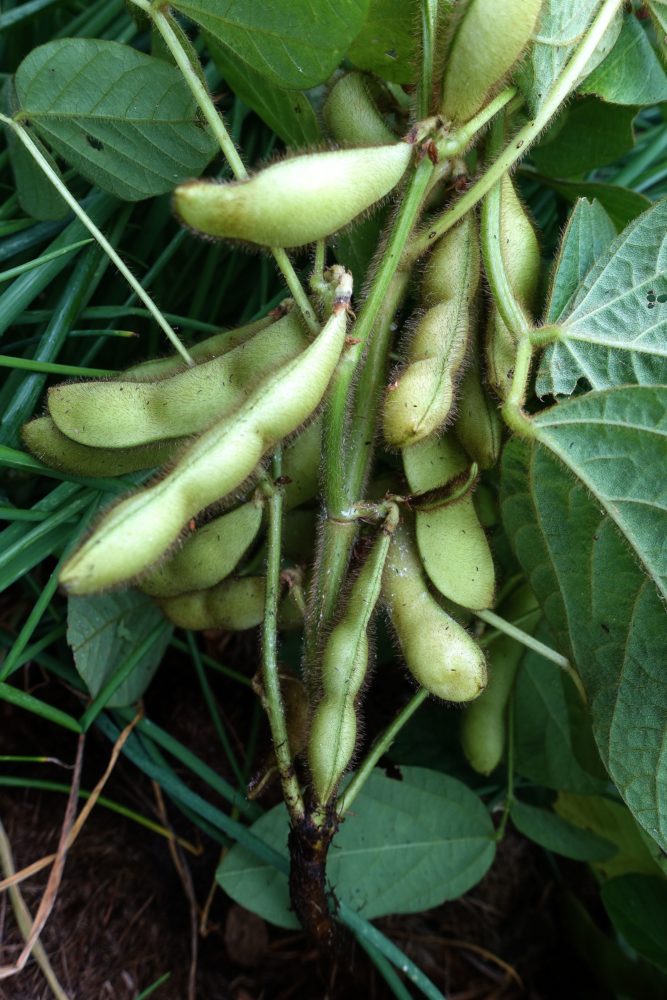
Plenty of beautiful beans underneath the leaves. Harvest when they are still green because they start to ripen and go yellow really quickly.
I sowed the soybeans in plug trays at the end of April. Soybeans germinate quite quickly (in the polytunnel) and because of this, I was able to plant them right next to my asparagus in the beds outside after a few weeks only.
We had a bit of a cold spell at the end of May, with temperatures as low as 14 degrees (-10 degrees Celsius.) Plenty of my plants froze, the soybeans too. Luckily, the roots seemed to be going strong though underneath the thick layer of mulch I added to the entire bed. This completely saved my beans!
The beans started growing again, although a lot later than expected. That's why I had to wait until the first days of September to start harvesting. There are so many pods on these plants, growing in large bunches. In fact, I think I would have had even more of them if the temperatures hadn't dropped so suddenly. As a result, some beans won't have time to develop properly before it gets too cold here in zone 3.
Magnificent taste
The Midori Giant pods are nice and large, with beautiful green little beans inside if you harvest them unripe. The beans turn yellow and a bit drier as they ripen. If you want to eat these beans as edamame, make sure to harvest them unripe and green. The beans are around four times as large as the Fiskeby variety. So, my hypothesis is that the large beans can retain a lot more water and therefore stay nice and succulent even after I pan-fry them. This means a lot tastier beans of course! These soft and creamy beans are insanely good! Even our youngest, the biggest bean fan in the family, gives it an A+.
Read more: How to grow fava beans
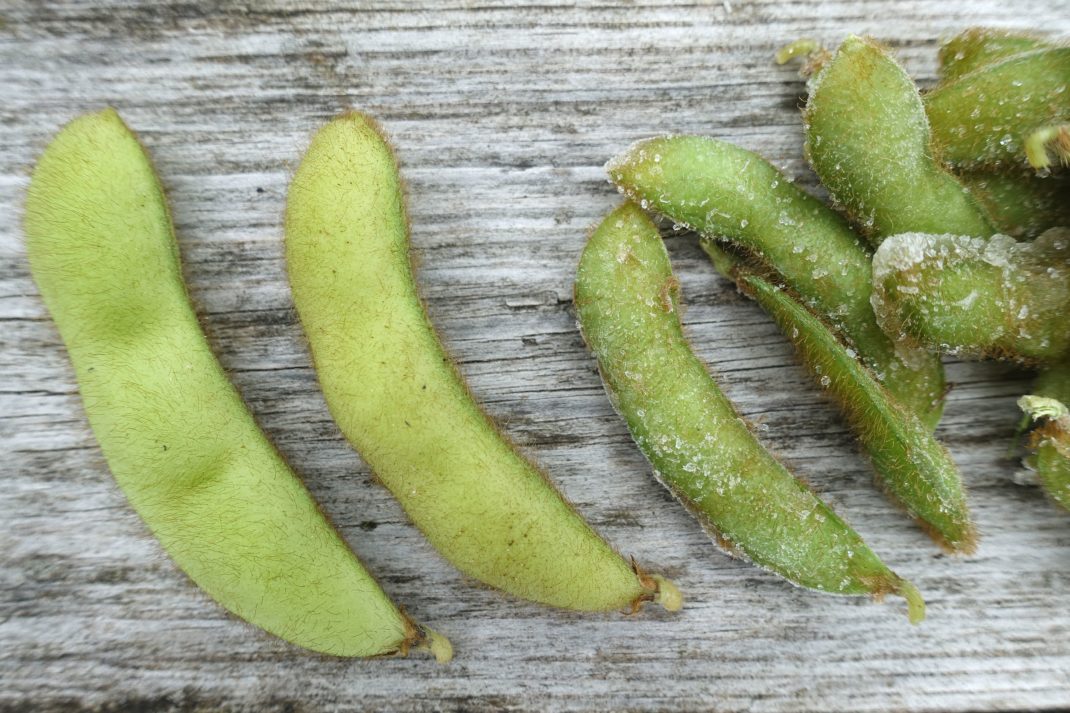
The larger beans are of the Midori Giant variety, the others are Fiskeby.
What does edamame mean?
But what does edamame mean? Well, it's a lot less complicated than it might sound. Simply put, it's the name for fresh and unripe soybeans. You can cook them while still in the pod, or eat the little beans on their own. Here in zone 3, the beans you buy in the store are usually imported. That's why I think it's so much better to grow them yourself, if possible. It's hardly worth it going for dried soybeans though since I would need so many of them. But the fresh edamame beans are a must in my garden!
More about beans: Harvesting fava beans
Midori Giant – perfect for zone 3
It can be quite difficult to grow some bean varieties here in Sweden, since they need a lot of heat and a long season. The Midori Giant takes around 80-95 days to grow (from planting outside to harvest, I assume), according to Baker Creek Heirloom Seeds. So, I actually think that this is an acceptable time frame for us here in Sweden too. Actually, I don't think it's very different from Fiskeby in this sense.
So, my assessment is that this is a great variety that works really well here in my kitchen garden. Probably in other parts of Sweden too! I'm guessing that you might have to grow them in a greenhouse if you are in an even colder climate though.
I actually decided to try two other kinds of soybeans this summer too, a black and a brown variety. However, I can't remember what they were called. The brown variety produced really large plants that started bolting in mid-September, which obviously doesn't work for me here in zone 3. The black variety has smaller plants but I don't think they will grow quickly enough for me either, despite the fact that I sowed this variety at the same time as Midori Giant. I will give the black variety another try though. After all, you never know!
/Sara Bäckmo



Leave a Reply
You must be logged in to post a comment.